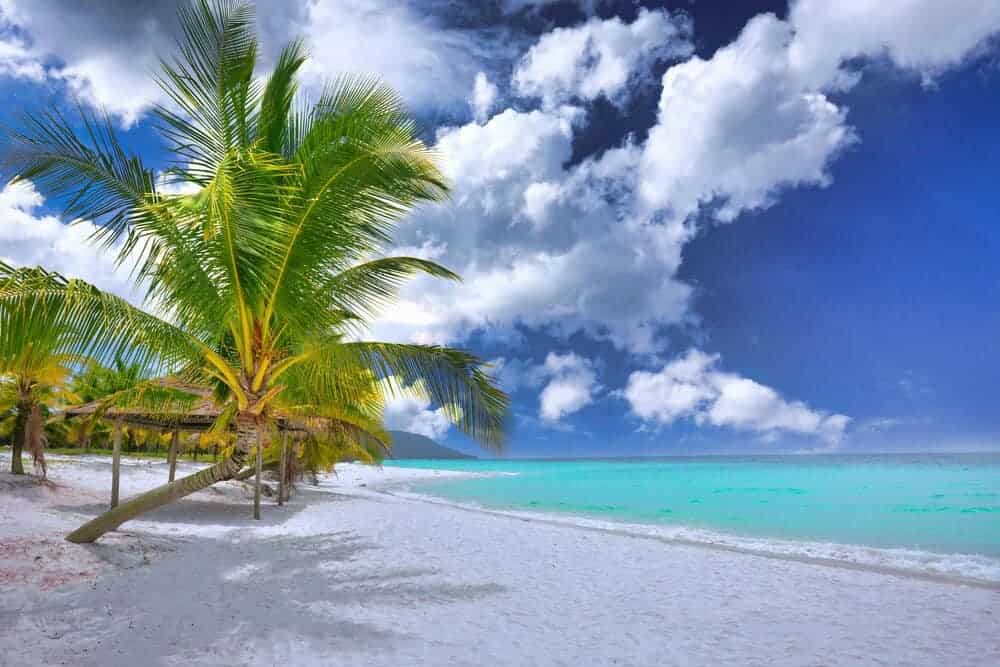Koh Samui, Thailand’s second-largest island, offers a slice of paradise with its palm-fringed beaches, crystal clear waters, and vibrant cultural scene. From the bustling beaches of Chaweng to the serene sanctuaries of the island’s interior, Koh Samui is a diverse destination that caters to both adventurers and those seeking relaxation. This guide will navigate you through the best experiences Koh Samui has to offer, ensuring your visit is unforgettable.
History of the Destination
Koh Samui’s history is as intriguing as its landscapes. Once a fishing community, the island’s modern development began in the 1970s when it was discovered by backpackers. Since then, it has transformed into a top tourist destination in Thailand, balancing luxury tourism with preserving its natural beauty and cultural heritage. Ancient traditions remain alive, particularly in the less commercialized parts of the island, where old wooden houses and coconut plantations paint a picture of its rustic origins.
Information on the Location
Located in the Gulf of Thailand, Koh Samui is part of Surat Thani Province. It’s surrounded by about sixty other islands, which together comprise the Ang Thong National Marine Park, a renowned resource of natural beauty. The island’s circular road connects beaches and villages, making exploration convenient for visitors.
Best Time of the Year to Visit
The best time to visit Koh Samui is during its dry season from December to February, when the weather is sunny and the humidity is at its lowest. March to August marks the hot season, ideal for beachgoers who don’t mind a bit more heat. September to November tends to be rainy, offering lush landscapes and fewer tourists, with accommodation often available at lower prices.
Best Sites to Visit
Koh Samui is not just about stunning beaches; it’s also home to cultural landmarks and natural wonders:
- Big Buddha Temple (Wat Phra Yai): Features a majestic 12-meter tall golden Buddha statue that can be seen from several kilometres away.
- Hin Ta and Hin Yai Rocks: Fascinating rock formations on Lamai Beach that resemble male and female genitalia, which are steeped in folklore.
- Na Muang Waterfalls: A picturesque set of two waterfalls that are among the island’s most scenic spots.
- Ang Thong National Marine Park: A pristine archipelago ideal for day trips, featuring kayaking, hiking, snorkeling, and diving.
- Fisherman’s Village in Bophut: Known for its rustic-style buildings, boutique stores, and trendy restaurants, this area comes alive, particularly on Friday nights when the street market offers an array of shopping and dining options.
Best Excursions to Do
Explore beyond the beaches with these recommended excursions:
- Island Hopping: Spend a day exploring nearby islands such as Koh Phangan or Koh Tao, which offer excellent snorkelling and diving.
- Jungle Safari on 4×4: Discover the lush interior of the island, visiting hidden waterfalls and enjoying views from mountain tops.
- Thai Cooking Classes: Learn how to make traditional Thai dishes at one of the many cooking schools around the island.
- Sunset Cruise: Enjoy a romantic evening aboard a sailboat, watching the sunset over the Gulf of Thailand.
- Eco Tours: Engage in eco-friendly tours that explore the mangroves or the marine environment, emphasizing conservation and education.
Best Beaches to Visit
Koh Samui’s beaches are world-renowned for their beauty and variety:
- Chaweng Beach: The island’s longest and most popular beach, known for its vibrant nightlife and entertainment.
- Lamai Beach: Slightly quieter than Chaweng, Lamai offers a relaxed vibe with plenty of amenities and natural beauty.
- Maenam Beach: Offers a more local feel with less commercial development, ideal for families or those seeking tranquillity.
- Choeng Mon Beach: Located on the northeastern tip of the island, it is perfect for swimming and sunbathing, with a more upscale ambience.
- Bophut Beach: Combines a traditional beach setting with the charm of Fisherman’s Village, offering sophisticated dining and shopping.
Best Food & Drink Places to Visit
The culinary scene in Koh Samui is as diverse as its landscape, offering everything from traditional Thai cuisine to international dishes:
- The Jungle Club Restaurant: Offers not only delicious Thai and international cuisine but also some of the best views on the island.
- Zazen Restaurant: Located in Bophut, this restaurant is known for its Thai-fusion menu and romantic beachside setting.
- Street Food Stalls at Chaweng Night Market: A must-visit for foodies, where you can sample everything from pad thai to fresh seafood at affordable prices.
- Dr Frogs Italian Bar & Grill: An ideal spot for those craving Italian or Mediterranean cuisine, paired with stunning ocean views.
- Coco Tam’s: A laid-back beach bar in Bophut that is perfect for enjoying a cocktail while watching the sunset.
Hidden Gems to Visit
Beyond the well-trodden path, Koh Samui offers several hidden gems:
- Secret Buddha Garden: Hidden away in the hills of Samui, this beautiful garden is filled with statues and offers a peaceful retreat from the more crowded tourist spots.
- Samui Elephant Sanctuary: A pioneering sanctuary where visitors can observe rescued elephants in a humane environment that promotes their well-being.
- Laem Sor Pagoda: Located off the beaten track on the southern tip of the island, this golden pagoda offers tranquillity and a beautiful beach nearby.
- Wat Khunaram: This temple houses the mummified body of a monk who died while meditating, revered by locals as a symbol of dedication and purity.
Best Budget Hotels
Koh Samui offers a range of budget-friendly accommodations, providing excellent value for money:
- Samui Verticolor: Located near Chaweng Beach, this hotel offers modern amenities at an affordable price with easy access to local attractions.
- Lamai Buri Resort: Located in Lamai, this hotel provides a comfortable stay with a pool and friendly service, close to the beach and nightlife.
- Ibis Samui Bophut: A reliable choice for budget travellers, located right on the beach with a relaxed atmosphere and basic but clean facilities.
Best Mid-Range Hotels
For those looking for a bit more comfort without the luxury price tag, these mid-range hotels offer excellent facilities:
- Mantra Samui Resort: Known for its stunning hillside views, spacious rooms, and excellent customer service, located just outside the main tourist areas.
- OZO Chaweng Samui: A contemporary hotel with direct beach access, it’s perfect for those who want to be close to Chaweng’s vibrant scene but also seek a comfortable retreat.
- Peace Resort: Located on Bophut Beach, this resort offers traditional Thai bungalows and modern rooms with a beautiful beachfront setting.
Best Boutique Hotels
Koh Samui’s boutique hotels are perfect for travellers seeking a unique and personalised experience:
- Bo Phut Resort & Spa: This intimate resort offers luxurious accommodations and top-notch facilities, nestled in a tranquil part of the island.
- The Library: With its minimalist design and unique red swimming pool, this hotel offers a unique aesthetic and is located on Chaweng Beach.
- Sala Samui Choengmon Beach Resort: Offers private villas and suites with a focus on privacy and luxury, located in a quieter part of the island.
Best Luxury Hotels
For the ultimate in luxury and pampering, consider staying at one of Koh Samui’s premier hotels:
- Four Seasons Resort Koh Samui: Located on a private beach, this resort is synonymous with luxury, offering stunning villas, world-class service, and exceptional amenities.
- Banyan Tree Samui: A sanctuary for the senses, this resort blends impeccable service with Thai hospitality, nestled in a series of cascading terraces on a private hill cove.
- Conrad Koh Samui: Each villa at this luxury resort features a private pool, with breathtaking views of the Gulf of Thailand.
Best Transport Options
Getting around Koh Samui is relatively straightforward with multiple transport options:
- Rental Cars and Scooters: Renting a car or scooter gives you the flexibility to explore the island at your own pace.
- Taxis and Songthaews: Taxis are widely available, but always agree on the fare before starting your journey. Songthaews (shared taxis) run along main roads and are cheaper than private taxis.
- Private Drivers: For hassle-free travel, consider hiring a private driver for one or multiple days.
Currency Information
The currency in Koh Samui, as in all of Thailand, is the Thai Baht (THB). Credit cards are widely accepted in hotels, restaurants, and larger shops, but cash is often preferred in smaller establishments and local markets. ATMs are readily available throughout the island.
Finding the Best Flights on TravelZine Flight Comparison Site
To find the best deals on flights to Koh Samui, using a reliable flight comparison tool like TravelZine can help:
- Search Various Airlines: Compare different airlines to find the best deals and flight times.
- Book Early: Especially during peak travel seasons, booking your flights early can lead to significant savings.
- Watch for Promotions: Regularly check for promotions and sales, which can provide great savings on flights to Koh Samui.
Koh Samui offers a vibrant mix of beauty, adventure, and relaxation, making it an ideal destination for every type of traveller. Whether you’re looking for a luxurious escape, a cultural immersion, or just a serene spot on the beach, Koh Samui has something to offer. Prepare to be captivated by its charm, and leave with memories that will last a lifetime.


